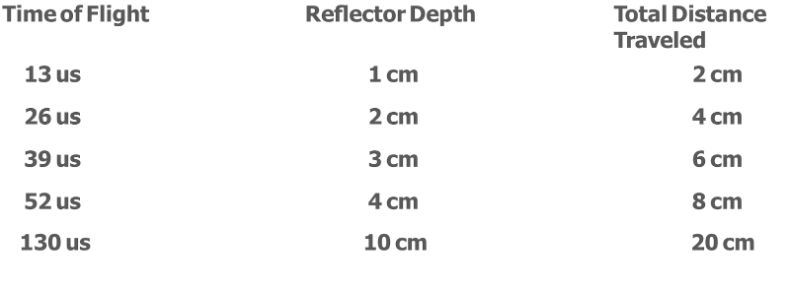Edelman Chapter 7: Range Equation
1/13
There's no tags or description
Looks like no tags are added yet.
Name | Mastery | Learn | Test | Matching | Spaced |
|---|
No study sessions yet.
14 Terms
In order to create an anatomic image, a sound pulse must
travel to a reflector in the body and return to the transducer
How can we accurately calculate the position of the reflector in the body?
By using the time of journey
The elapsed time from pulse creation to pulse reception. ie. The round trip time of a pulse. This is called? (2 names)
Time of flight AKA Go return time
How are time of flight and depth related?
They are directly related. The deeper a reflector, the longer it will take the pulse to reach it and return back to the transducer
A more superficial structure will have a _________ time of flight/go return time
shorter
Distance = speed x Time. In regards to distance using this formula will give me:
The total distance traveled (to and back from the reflector)

This equation will give me?
The depth of the reflector. Since we are dividing by 2 we get just the depth of the reflector instead of the total distance traveled
What is the 13 microsecond rule?
For every 1 cm of depth in the body, the ultrasound pulse takes 13 microseconds to go out and come back. (go return time)
What is the formula for depth (cm) using the 13 microsecond rule?


Explain this image
Define PRP
The time from the start of one pulse to the start of another pulse
How is PRP related to the maximum imaging depth
They are directly related. The pulse repetition period determines how deep you can image because you have to wait long enough for echoes from the deepest structures to return before sending the next pulse. Therefore, the longer the PRP (off time) → the deeper structures you can see. The shorter the PRP (off time) → the more superficial structures you can see

PRF is _____________ related to maximum imaging depth
inversely

This following formula can be used to:
calculate the maximum PRF allowed for a given imaging depth. This tells you the fastest you can send pulses without missing echo